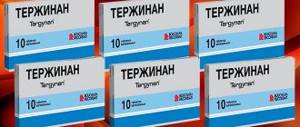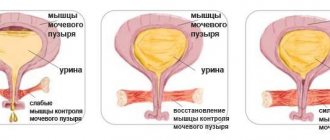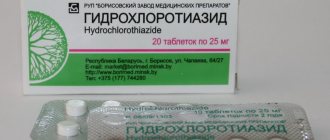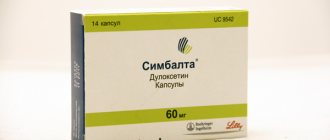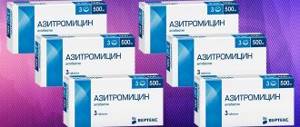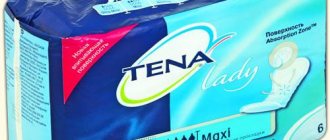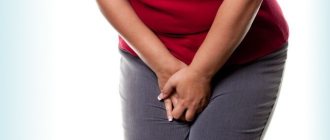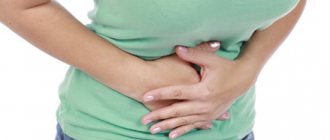In medical practice, the term “enuresis” is understood as a syndrome associated with involuntary emptying of the bladder, which occurs mainly at night. Against this background, this process is beyond the control and desires of the patient. The drug “Minirin” helps to cope with this problem. Its main active substance is desmopressin. This pharmaceutical drug belongs to the group of hormones of the pituitary gland and hypothalamus. It has vasopressin-like pharmacological effects. Reviews of “Minirin” for enuresis in children will be discussed below.
How important is the problem of urinary incontinence in children?
In pediatrics, urinary incontinence is one of the main problems. Doctors have long been studying the disease and finding the most effective methods to combat it. Because of its significance, the International Society for Pediatric Continence was created. Despite the fact that the disease is serious from a medical point of view, the psychological and social side is not the least important. In addition to censure and punishment from adults, the child has to face ridicule from peers. Childhood impressions and memories influence the development of personality in the future. People who have had to deal with the disease experience difficulties adapting to society.
Dosage and instructions for use
The doctor selects the dosage. In some cases, it is necessary to take the medication at a strictly prescribed time (before bedtime). After relief of urinary incontinence, doctors recommend continuing treatment with Minirin, reducing the dose to a maintenance amount. The duration of therapy is about 3–4 months. After this period, the baby’s well-being is re-evaluated, and doctors decide what to do next.
Initially, one tablet (0.2 mg) is prescribed per day before bedtime. After a week, the dosage is increased to 0.4 mg per day or left the same. The pill must be taken after a meal (after a few hours). Absorption of food may negatively affect the effect of the medication. The product is washed down with a small amount of water; limit liquid intake for the baby. It is not recommended to drink before bed.
Does bedwetting always indicate enuresis?
Urologists and nephrologists call enuresis a child’s inability to control urination at night. It would be incorrect to call the term daytime enuresis. Experts diagnose this disease only in children aged five years and older. If the inability to control urination is observed only during night sleep, then parents should be seriously wary. From the experience of doctors, it follows that the drug “Minirin” is quite effective. Reviews for enuresis in children about taking this drug are in most cases positive. Often the drug turned out to be the only effective method out of many tried in the fight against this unpleasant symptom.
Many doctors consider this age mark to be rather arbitrary. It is important to pay attention to the individual pace of neuropsychic development of a particular child. Based on the studies conducted, it was found that complete control of urination during night sleep in preschool children is formed individually. Time frames vary from 3 to 5 years. In order to make an accurate diagnosis, the doctor must make sure that the child really does not control urination. Otherwise, there is no need to talk about the development of enuresis. The disease can be excluded when the child is aware of the problem. Enuresis is not characterized by children's anxiety about the current situation and interest in treating the disease.
Kidney inflammation treated with antibiotics
Pathogenic microorganisms, entering the bloodstream, in most cases provoke an infectious-inflammatory process. Not every body is able to cope with bacteria and microbes; synthesized medications - antibiotics - come to the aid of kidney inflammation.
Diseases of the urinary system often require antibiotic therapy. The nature of diseases is different, so drugs are selected taking into account the individual characteristics of the body and the clinical picture of the disease.
Important! The selection and prescription of antibiotics is carried out strictly according to a specific scheme, known only to the urologist, who takes into account all the nuances of the course of the disease and the general condition of the patient.
Principles of treatment
Kidney inflammation is a phrase implying diseases:
- Pyelonephritis is an infection of the kidneys with damage to the renal tubules, caused by pathogenic microflora.
- Glomerulonephritis is an inflammatory disease characterized by an aggressive reaction of the body to its own cells (glomeruli of the kidneys).
- Urolithiasis of the kidneys.
- Cystitis (urinary tract infection).
The acute form of pyelonephritis and glomerulonephritis is treated only during hospitalization. This is due to the fact that the patient needs rest and bed rest, in compliance with all the requirements of specialists. Treatment for kidney inflammation includes, in addition to bed rest, a specialized diet and antibacterial therapy.
After a complete diagnostic procedure is carried out to determine the cause of inflammation, antibiotic therapy is prescribed. If it is impossible to identify the pathogen, then doctors use broad-spectrum drugs.
The drugs are administered intravenously, intramuscularly and orally in the form of tablets. If one antibiotic does not help with kidney inflammation, it is changed to another.
In the first stages of the disease, treatment of kidney inflammation is carried out with protected penicillins and 3rd generation cephalosporins.
Most antibiotics have a nephrotoxic effect and can damage kidney tissue, which can lead to the development of kidney failure. A course of medications, usually lasting from 5 to 14 days, is prescribed by a specialist. It is not recommended to interrupt treatment of kidney inflammation with antibiotics, because in this case the therapeutic effect is not achieved.
Drugs for the treatment of inflammation
Treatment of inflammatory processes in the kidneys is mandatory, since the risk of developing renal failure is extremely high.
The following groups of antibiotics are used for treatment:
- Penicillin. The main representatives of the group of drugs are penicillin and amoxicillin. A significant drawback of drugs is their inability to overcome pyelonephritis. But this group can be taken by pregnant and lactating women due to low toxicity. Effective therapy is carried out in the fight against E. coli and various enterococci, staphylococci and streptococci. Medicines are not prescribed to patients with allergies to penicillin.
- Cephalosporin. The main representatives of the group of drugs are cephalexin, cephalothin, zinnate, claforan, ceftriaxone, ceftizoxime, ceftazidime, cefpirome. The 3rd and 4th generation of antibiotics are mainly used, since the previous ones were not highly effective. Drugs in this group have shown themselves to be effective in preventing the disease from developing into a more serious stage. They are often used when signs of renal failure develop, as they are excreted by the liver.
- Fluoroquinolone. This group includes the “heavy artillery” of antibiotics. Specialists prescribe such medications when the patient is in danger of death or in an extremely serious condition. The group has two generations of drugs. First: fleroxacin, ciprofloxacin, ofloxacin. The second generation is able to cope with all pneumococcal pathogens: sparfloxacin, levofloxacin.
Second generation drugs are used only during hospitalization and under the supervision of a specialist. They are used when other drugs have not had the desired therapeutic effect. Aminoglycosides are antibiotics used in severe clinical conditions. These include drugs such as amikacin, netilmicin, sisocymin. Medicines have quite extensive and serious contraindications and provoke complications. Such as:
- Development of renal failure.
- Hearing dysfunction.
- Disturbances during pregnancy (contraindicated for use).
The drugs have contraindications for use in elderly people.
These medications are taken in strict dosages and only as prescribed by a doctor.
Treatment of cystitis
Almost every woman has encountered a disease such as cystitis in her life. Cystitis is an inflammation of the bladder. Common symptoms include frequent and painful urination in small volumes. As women complain to doctors, there is a “pain” when urine flows out.
Cystitis is treated comprehensively with antibiotics, herbal remedies, antispasmodics and painkillers. For antibiotic therapy, the following drugs are prescribed: furagin, monural, levomycin, ciprolet, furadonin, ceforal. These medications have proven themselves and effectively treat inflammation of the kidneys and urinary tract.
Among the new pharmaceutical products is palin, a new generation of antibiotic quinolones. It has already been widely used in gynecology and urology due to the speed of elimination of infection and the minimum of contraindications. Prohibitions on use include old age (over 69 years), allergic reactions to the components of the drug and developing renal failure.
Penicillins
Penicillins are a modern group of drugs classified as the fifth generation. Capable of providing effective resistance to gram-positive and gram-negative bacteria.
The dosage of these medications is calculated depending on the age and individual characteristics of the patient’s body:
- from 40 to 60 mg/kg – for adults;
- from 20 to 45 mg/kg – for children.
Attention! The daily dose is divided into 2-3 parts. The drugs are administered intravenously or intramuscularly.
Due to its low toxicity, the drug is quite well tolerated by patients. The only exceptions are those cases when the patient has intolerance to any of the components of the drug.
Long-term use of this group of antibiotics for kidney disease can cause the development of an allergic reaction (rash, redness of the skin) and dyspeptic disorders.
If pyelonephritis was provoked by Pseudomonas aeruginosa, then it is recommended to use Pipracil and Securopen in combination with gentamicin and amikacin. In case of contraindications to the use of aminoglycosides, a drug of the penicillin group called ciprofloxacin is prescribed.
Therapy is carried out under strict control of biochemical blood parameters, since there is a high probability of developing hypernatremia and hypokalemia.
Cephalosporins
Cephalosporins are a group of drugs derived from aminocephalosporic acid. They are most effective in the development of an inflammatory process in the kidneys caused by pyelonephritis and glomerulonephritis. Due to mainly hepatic metabolism (excretion from the body), medications are recognized as the safest in the presence of symptoms of renal failure.
The most powerful drugs in this group are the following:
- cefotaxime;
- cefoperazone;
- ceftazidime;
- ceftriaxone.
Dose: 50-100 mg/kg divided into 2 doses per day.
They can cause significant harm in the presence of an infectious process in the urinary tract. Therefore, this factor is the main contraindication for use. Also, these medications should not be taken during pregnancy and by newborn children. It is strictly forbidden to combine cephalosporins with alcoholic beverages.
After completing the course of taking the presented group of antibiotics for another 5 days, the formation of a disulfiram-like reaction is possible:
- sharp pain in the abdominal area;
- incessant vomiting;
- increased feeling of anxiety;
- increased heart rate;
- significant reduction in blood pressure.
Macrolides
Treatment of the kidneys with macrolide antibiotics is irrelevant in situations where the inflammatory process was caused by the action of staphylococci, enterococci, Klebsiella and Escherichia coli. In most cases, macrolides are prescribed for glomerulonephritis.
The most effective drugs are vilprafen and erythromycin. They are quite expensive, price from 680 rubles.
Carbapenems
Carbapenems are a group of antibiotics classified as beta-lactams. They are characterized by a wide spectrum of activity and a high level of effectiveness in the inflammatory process in the kidneys, provoked by the action of gram-positive and gram-negative flora. Administration is performed intravenously.
The most popular drugs in this group are the following:
- Imipenem – for inflammation of the kidneys or bladder, it is recommended to combine it with cilastatin. This helps ensure therapeutic concentrations of the drug in the urine;
- Meropenem is the most common drug, its effectiveness is confirmed by numerous reviews;
- Doriprex;
- Invazin.
This medicinal group is recommended for use in severe inflammatory processes. Especially if it was caused by E. coli or Klebsiella. The drugs are ineffective against Pseudomonas aeruginosa.
Long-term use of carbapenems can cause a number of side effects:
- manifestations of an allergic reaction in the form of a rash and redness of the skin;
- symptoms of nephro- and neurotoxicity;
- persistent dyspeptic disorders.
Aminoglycosides
The presented group of drugs has the following characteristics:
- In comparison with the groups of drugs presented above, aminoglycosides have more pronounced bactericidal properties and practically do not cause allergic reactions.
- They are able to have an effective effect in the event of the development of an inflammatory process in the kidneys due to staphylococci, Pseudomonas aeruginosa, Proteus, Klebsiella, Escherichia coli, and enterobacteria.
- Aminoglycosides are practically ineffective against inflammation caused by the activity of streptococci and enterococci.
- The maximum concentration of the drugs presented in the renal tissue can be achieved with intravenous and intramuscular administration.
- They have a high level of toxicity. Typical side effects include nephrotoxicity, deterioration of auditory function, damage to the vestibular apparatus, and the likelihood of developing neuromuscular blockade.
The course of taking aminoglycosides is no more than 10 days. During therapy, it is necessary to monitor biochemical blood parameters.
Among the most common drugs in this group are amikacin and gentamicin.
Use of uroseptics
Uroseptics are able to fight infections of the kidneys and urinary system.
They are divided into three groups:
- Nitrofurans. The most popular of them are furadonin and furagin. They practically do not accumulate in tissues and blood and are excreted from the body in the urine. They are characterized by a wide spectrum of activity and are highly effective against inflammatory processes in the kidneys caused by staphylococci, streptococci, enterococci, and trichomonas. Do not use while pregnant. They have a large number of side effects: bronchospasms, dyspeptic disorders, pulmonary edema, damage to the central nervous system. They have a toxic effect on liver and kidney cells.
- Hydroxyquinolines. Among this group, only nitroxoline is widely known. The drug is characterized by a wide range of fight against various microorganisms, which include fungi. Doesn't cause addiction.
Quinolones and fluoroquinolones. Among the quinolones, there are 4 generations of drugs, but only nolicin is classified as uroseptics. It is removed from the body within 4 hours, while other drugs with similar effects are removed after 14 hours.
Anti-relapse therapy
Inadequate antibacterial therapy is recognized as the most common cause of recurrent pyelonephritis. Selection of a drug that is not active against the pathogen, small dosages, addiction to the drug with prolonged use, insufficient treatment period.
To prevent the development of chronic pyelonephritis, uroseptics are prescribed every month for no more than 10 days. Treatment is carried out under the control of urine cultures for sterility. If there is no improvement, the medications used are changed every 5-7 days.
Quite often, during anti-relapse therapy, drugs are prescribed that have anti-inflammatory, antispasmodic (painkiller) and diuretic effects, for example, canephron, cystone, anatoxin, 5-Nok.
In parallel with this, herbal treatment can be carried out. But homeopathy alone will be useless, the use of antibiotics is mandatory
Quinolones and fluoroquinolones
The presented group of drugs includes 4 generations of drugs with a wide spectrum of action.
Quinolones and fluoroquinolones are effective against the inflammatory process in the kidneys caused by the action of gram-negative and gram-positive flora.
Available in the form of tablets and capsules. The dose is taken 2-6 hours after consuming antacids or other medications containing iron, zinc and bismuth.
The following side effects may occur:
- heartburn;
- pain in the epigastric zone;
- problems with appetite;
- feeling of nausea;
- gagging;
- allergic reactions;
- migraine;
- temperature increase.
Injections for kidney inflammation
In addition to medications in tablet form, doctors can prescribe injections to patients for kidney inflammation. But this is carried out only in severe cases of the disease.
Injections can be fast-acting; they are most often prescribed for inflammation of the kidneys and directly the urinary tract, ureter, and deterioration of urogenital health. These include Tsifran, used at 500 mg every 12 hours. In the presence of renal failure, the dosage is halved.
In addition, Tsiprobay injections are prescribed twice a day, 100 mg. Contraindications include intolerance to any of the components present in the composition, pregnancy and breastfeeding.
The main thing to remember is that if you experience any symptoms characteristic of kidney inflammation (pain in this area, changes in the color of urine or a burning sensation during urine discharge), you should immediately consult a doctor. With timely treatment, further relapses can be avoided.
Mechanism of action of the drug
Minirin has repeatedly proven its effectiveness in the fight against bedwetting. Reviews about enuresis in children are often positive, especially when comparing the results after using other medications. The tablets consist of a synthetic analogue of the natural hormone of the posterior part of the pituitary gland, which significantly increases the likelihood of quickly eliminating the symptom and eliminates possible complications after undergoing treatment. The drug begins to act 15 minutes after administration, and the effect after taking the tablet lasts for 10 hours.
What makes it popular in the treatment of enuresis?
Composition and release form
“Minirin” is sold in the form of a spray and tablets, which contain the active substance desmopressin.
Contains medicine and excipients, but they are different for each dosage form. The list of additional ingredients is described in the table:
| Type of medication | Components |
| Spray | Sodium chloride |
| Benzalkonium chloride | |
| Sodium phosphate | |
| Distilled water | |
| Food additive E330 | |
| Pills | Povidone |
| Milk sugar | |
| Starch | |
| Food emulsifier E572 |
Therapeutic effect
The action of Minirin is aimed at reabsorbing fluids by the kidneys.
The synthetic drug "Minirin" has pronounced antidiuretic activity. The active component of the drug reduces urine output by enhancing the process of reabsorption of fluid into the renal tubules. With regular use of Minirin, it will be possible to normalize the urination pattern, and nocturnal urinary incontinence, which most often occurs in children, will also stop. Patients can notice positive results within 25 minutes after taking the dose of the described medication.
Contraindications for use
Like all medications, this has some contraindications:
- congenital pathological polydipsia;
- disturbances in the functioning of the heart;
- excess body weight;
- intolerance to the components included in the drug;
- psychogenic pathological polydipsia.
The drug is not cheap, but highly effective. Instead of wasting time and money on eliminating symptoms with less expensive analogues, it is easier to purchase Minirin. Reviews for enuresis in children after taking it are only positive, which cannot be said about other medications. At best, they simply fail to eliminate the symptom. It happens that an incorrectly selected course of therapy only aggravates the healing process. Even experienced doctors, based on their long-term observations, advise using Minirin. Reviews for enuresis in children (the causes of the disease are very diverse) indicate the effectiveness of the remedy. A noticeable result is observed after just a few days of treatment.
Correct use of furagin
Furagin is a drug of synthetic origin that has anti-inflammatory and antibacterial effects on many types of microorganisms. When consumed orally, it has a disinfecting effect on the bladder, urethra and kidneys.
Many people believe that furagin is an antibiotic, however, this is not true, since this drug does not have a system-wide effect. The main task of the drug is an antibacterial effect on the urinary system.
The drug is produced in the form of tablets, having a beneficial effect in treatment, it has proven its effectiveness, therefore it is often used in medical practice to treat many diseases. Furagin is well absorbed by the intestines, blocking the spread of infection in the body, and after several hours it safely leaves the body naturally through urine.
Furagin is not an antibiotic - it is a medicine that has proven itself to be effective in eliminating microorganisms. When taken externally, it has proven to be an excellent antiseptic that successfully copes with wound healing.
Like many domestically produced drugs, it has an imported analogue, which is practically no different from its original. However, a significant difference in price may influence the patient's choice. It is impossible to say exactly which drug is more effective, since both drugs are aimed at antimicrobial effects on the body.
Additional properties of the drug include the ability to activate the immune system, thereby increasing the amount of protective proteins in the blood, which helps defeat pathogenic bacteria that attack the human body. In Russia, the medicine is available in capsules, tablets and powder.
- Dosage and use of the drug
- Possible side effects
Dosage and use of the drug
Typically, the dosage of use is prescribed by a specialist. Treatment for adults consists of taking two tablets four times a day at the first signs of the onset of the disease, then the dosage is reduced to two tablets three times a day.
The course of treatment is on average ten days, based on individual tolerance and the form of the disease, the dosage can be changed at the discretion of the attending physician. If necessary, the course of treatment is repeated after about fifteen days, according to the above scheme. For prevention, adults can take one tablet of furagin in the evening.
When prescribing the drug to children, body weight is taken into account on the basis that five milligrams of the drug are prescribed per kilogram of weight. It should be taken into account that while taking furagin, the child must adhere to a high protein diet and sufficient water intake. On average, the doctor prescribes the medication for eight days, which depends on the individual nature of the disease.
If necessary, the course is repeated, as in adults, after about fifteen days. Despite the fact that such a course is prescribed in the general instructions for use, you should not self-medicate.
To achieve the best results, it is necessary to consult a doctor who can most accurately determine and prescribe the required dosage.
Furagin is often prescribed for cystitis, as it is one of the most effective remedies prescribed by a doctor for this disease.
It has a local effect on the organs of the urinary system, which stops the growth of microorganisms, while increasing and strengthening the immune system. But one should also take into account the fact that prescribing furagin for cystitis does not help everyone equally; for some it can be very effective, but for others it can cause side effects. The folk way to cleanse the kidneys! Our grandmothers were treated using this recipe...
Cleaning your kidneys is easy! You need to add it during meals...
If the attending physician prescribed furagin for cystitis, but after several days there are no visible improvements, this means that the bacteria that caused the inflammatory process are already resistant to this drug.
When prescribing furagin tablets for cystitis to a patient, the attending physician usually pursues two goals: the first is to quickly and effectively relieve the main symptoms, and the second reason is to combat inflammatory processes. Sometimes the attending physician may prescribe, instead of this remedy, its analogue, such as furagin lect, which is also very effective.
Furagin Lect is slightly different in composition from its predecessor and is contraindicated in children under four years of age, as well as during pregnancy and breastfeeding, so it should only be taken with caution and after consultation with a specialist.
To ensure that the medicine does not lose its effectiveness, it should be stored correctly. The tablets should be stored in a dry and dark place at a temperature not exceeding thirty degrees, in a place well protected from children. If these rules are followed, the medicine can be stored for up to five years.
Possible side effects
The use of the drug can also cause unwanted side effects, as a result of which the following may be noticed:
- slight dizziness;
- Nausea and vomiting;
- Insomnia;
- Decreased appetite or its complete loss;
- Excessive sweating;
- Headache;
- Stomach pain and heartburn;
- All kinds of allergic reactions.
If one or more of the above symptoms suddenly appears, it is necessary to reduce the dose of the drug used. If these actions have no effect on improving the patient’s well-being, then you should stop taking furagin lect altogether. To minimize the risks associated with side effects, you need to consult a specialist.
When prescribing by a doctor, a number of features are taken into account in which the drug cannot be taken:
- During breastfeeding;
- Allergic reactions to one of the components that is part of the medicine;
- Late pregnancy;
- The child is less than seven days old;
- Kidney infection;
- Kidney failure.
During pregnancy, cystitis may manifest itself. In this case, you should immediately contact a urologist, who should prescribe effective treatment.
If the disease is at an early stage and the pregnant woman does not have a fever, the doctor, despite the fact that this drug is contraindicated for use during pregnancy, is confident in the appropriateness of his decision and should not refuse treatment. Since complications that may arise during the course of the disease can have a detrimental effect on the fetus.
While taking the medication, alcohol is absolutely contraindicated, as it can have undesirable effects on the human body and lead to increased side effects. Based on reviews of people who took furagin lect, we can conclude that it has a mild and quick effect that is felt almost immediately.
Of course, it affects each person differently and it is possible that mild side effects may occur, but in general it is an inexpensive and good drug that has no negative reviews among patients.
Is the drug really that good?
When traditional methods of combating nocturnal enuresis did not produce a positive result, desperate mothers agree to try Minirin. Reviews for enuresis in children remain only positive. Many then regret that they put off visiting the doctor, tormenting not only themselves, but also the child.
Mothers who used this method of treatment to treat their children testify to the absence of relapses after the completed course, taking into account the fact that repeated cases are common.
There is a category of parents who hope to the last that the disease will go away on its own when the child grows up. Unfortunately, this is not typical for childhood enuresis. Like any disease, it requires timely and proper treatment. Only a complete examination will help to accurately diagnose and find the best ways to combat the symptoms. Often, among many drugs, only Minirin really helps to eliminate the symptom. Reviews for enuresis in children who were treated using these tablets are positive.
How is bladder cystography performed?
Have you been trying to cure your KIDNEYS for many years?
Head of the Institute of Nephrology: “You will be amazed at how easy it is to heal your kidneys just by taking it every day...
Read more "
Bladder cystography is a diagnostic endoscopic examination performed using x-rays. Its main goal is to identify structural pathological changes, changes in the shape of the ureter, urethra and the bladder itself.
The process of treating diseases of the genitourinary system is directly related to the need to detect pathological conditions, which generally makes it possible to obtain a complete picture of what is happening. If necessary, it can be prescribed for women, men and even children.
Features of drug treatment
- In the primary form, the dosage is reduced.
- If there is no improvement, the dose is increased.
- Treatment lasts about 3 months.
- After a week's break, the doctor decides whether there is a need to introduce a second therapeutic course.
- You should not drink liquid during or after taking the tablets.
Side effects:
- nausea;
- headache;
- abdominal pain.
The drug "Minirin" has proven itself well on the market. Reviews for enuresis in children, when taken correctly, are only positive. It is important to follow your doctor's advice to achieve the desired result.
Side effects while using the drug
This medicine may cause side effects. At the same time, the list of negative effects of the drug is quite impressive. Thus, as part of treatment with Minirin, patients may experience:
- Quick gain of excess body weight.
- Having dry mouth.
- Headaches along with nausea and peripheral edema.
- Hot flashes, vomiting and cramps.
- Development of transient tachyarrhythmia.
It is important to know that side effects are often associated with non-compliance with medical recommendations when treatment is carried out without restricting fluid intake. In this regard, fluid retention and hyponatremia may occur in the body, which leads to the above side effects. Of course, at the first appearance of any adverse reactions, you should definitely report this to your doctor.
Release form
Available in tablet form with a dosage of 0.1 or 0.1 milligrams of desmopressin acetate. Packaged in a plastic bottle containing 30 tablets. Externally, the tablets are white with a characteristic groove in the middle.
Indications for use:
- with primary nocturnal enuresis in children over five years of age, as well as adolescents;
- for the treatment of patients with diabetes insipidus, in this case the dosage is determined by the doctor individually.
Reviews about Minirin
Reading reviews of patients with diabetes insipidus about Minirin, we can safely say that this drug helps them restore their well-being. All the effects declared by the manufacturer take place: the volume of urine is reduced, the urge to urinate becomes less frequent, and the feeling of thirst decreases.
The main issue that is discussed in connection with this drug is the correct dose selection. Many of those who have long suffered from diabetes insipidus and are forced to constantly take Minirin are convinced that the patient himself can regulate the dosage of the medicine. So, for example, one lady writes about this: “I slightly reduce the dose and look at my condition. If the volume of liquid drunk is equal to the volume excreted, and you feel good, then it’s worth drinking Minirin.” Often the need for maintenance therapy becomes greater or less due to weather changes, stress, and concomitant diseases.
It is obvious that patients with “experience” who understand the indicators of laboratory tests and the mechanism of the course of their illness, sometimes better and more subtle than some doctors, can make the necessary adjustment of the dose of Minirin themselves. But even they constantly remind everyone who is interested that to understand the situation, various tests, monitoring of processes occurring in the body, and timely consultation with a doctor are necessary.
Pharmacological properties of the drug Minirin
Minirin tablets contain desmopressin - a synthetic analogue of the natural hormone of the posterior lobe of the pituitary gland - arginine vasopressin (antidiuretic hormone). Desmopressin was obtained as a result of changes in the structure of the vasopressin molecule: deamination of 1-cysteine and replacement of 8-L-arginine with 8-D-arginine. Compared with vasopressin, desmopressin has a minor effect on vascular smooth muscle with more pronounced antidiuretic activity. Thanks to the described structural changes, Minirin activates only V2 vasopressin receptors located in the epithelium of the convoluted tubules and a wide part of the ascending loops of Henle, which causes an expansion of the pores of nephron epithelial cells and leads to increased reabsorption of water into the bloodstream. After taking the drug, the antidiuretic effect occurs within 15 minutes. Taking 0.1–0.2 mg of desmopressin provides an antidiuretic effect lasting up to 8–12 hours in most patients. The use of Minirin in patients with an established diagnosis of diabetes insipidus of central origin leads to a decrease in the volume of urine excreted and a concomitant increase in its osmolarity. As a result, the frequency and severity of nocturia decreases. No teratogenic or mutagenic effects of desmopressin have been identified. Desmopressin begins to be detected in the blood 15–30 minutes after administration. The maximum concentration in the blood plasma is reached after 2 hours. The half-life of desmopressin in the blood plasma is 1.5–3.5 hours. The drug is excreted in the urine, partly unchanged, partly after enzymatic breakdown.
Terms of sale and storage
To purchase Minirin at a pharmacy, you must have a prescription from your doctor. The average price of 30 swallowable tablets with a dosage of 0.1 mg is 1,400 rubles, the same number of lozenges with a dosage of 60 mcg is 1,700 rubles. Both forms of the medicine should be stored at home at a temperature not exceeding +25 degrees Celsius. The shelf life of regular tablets is 2 years, sublingual tablets are 4 years.
Overdose and drug interactions
If you accidentally take Minirin in excess dosage, this will prolong the duration of the tablet, and also increase the risk of fluid retention and a drop in sodium levels in the blood. For this reason, after identifying an overdose, you need to show the child to a doctor.
As for compatibility with other drugs, there are drugs that reduce the therapeutic effect of desmopressin, as well as drugs in which the risk of side effects from Minirin increases. All such medications are indicated in the paper leaflet for the tablets.
